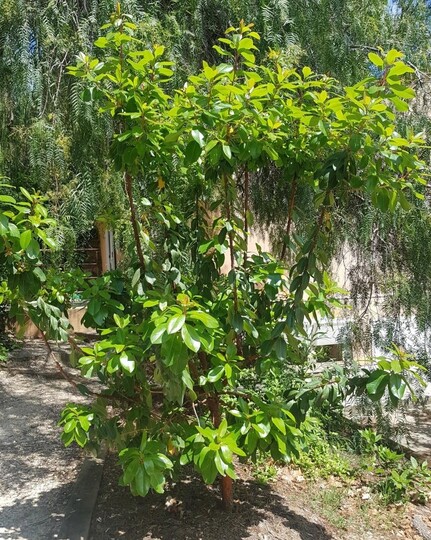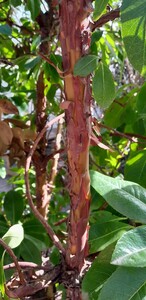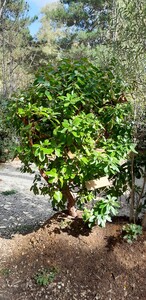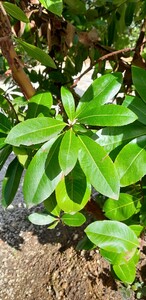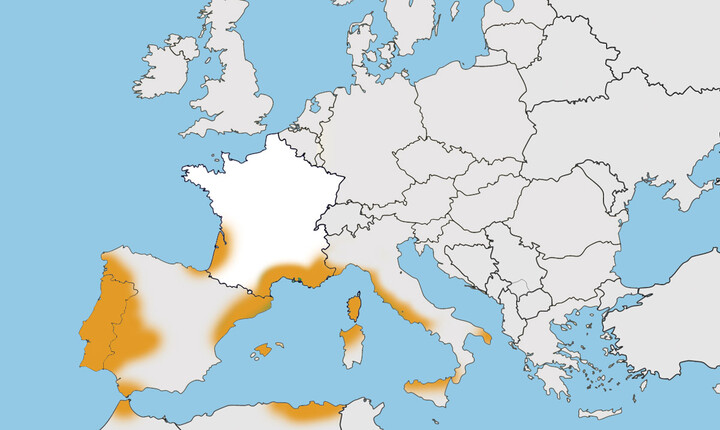Greek Strawberry Tree
Presentation
Adorned with evergreen foliage, this shrub is a genuine icon of the Mediterranean’s dry maquis. Its leaves are dark green with a shiny finish.
Perfectly at home here in Provence in Nos Coins de Paradis (Our Corners of Paradise), it blooms in spring. Its flowers, in the form of white bells, grow in clusters.
Its smooth, shiny orange-red bark is particularly remarkable and peels in strips off from time to time, unveiling a smooth, pistachio green surface below. The contrast between the various colours of the trunk and the tree’s foliage is quite striking.
Arbutus andrachne is resistant to temperatures of up to -10/-12°C. It adapts well to summer droughts and grows well on various types of soil.
The fruit of the strawberry tree is edible. It can be eaten raw or made into jams, jellies, fruit jellies, liqueurs or wines.
The fruit pulp has a tender, slightly floury texture and flavour that is both sweet and sour. The fruit contains many seeds but as they are tiny, they do not need to be removed before eating.
Identity
| Latin name : | Arbutus andrachne |
|---|---|
| Family : | Éricacées |
| Genus : | Arbutus |
| Species : | Andrachne |
| Color : | White to red |
| Origin : | Eastern Mediterranean, mainly Greece and Turkey. |
| Foliage : | Evergreen |
| Port : | Spreading |
| Height : | Up to 8 m |
| Flowering : | March |
| Location : | Nr.15: Diablotins |
Did you know?
Arbutus plants are very rich in fibres, vitamin C and polyphenols and have particularly powerful antioxidant properties.

